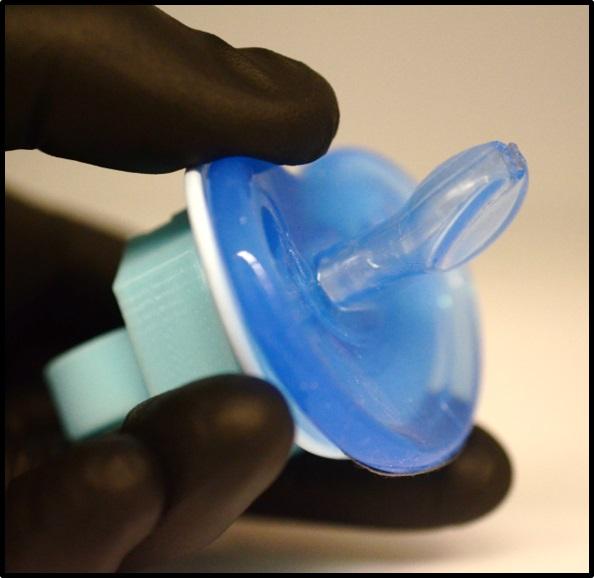Researchers from the University of California have developed a pacifier-based glucose biosensor that can help to monitor an infant’s real-time glucose levels in saliva.
Their research, published in ACS’ Analytical Chemistry, aims to provide a safe method to help diagnose and track diabetes in babies.
Wearable biosensors that can monitor health non-invasively are widely used among adults. However, developing such devices for infants has been challenging, owing to the discomfort caused by long-term use. For example, previously developed wearable biosensors used in infants are usually attached to clothing or skin – these devices often have hard surfaces that can harm or cause discomfort to a baby’s delicate skin after long-term use. So far, this technology has only been useful for measuring physical characteristics such as heart-rate or respiration rate in babies. Chemical monitoring, such as continuous glucose monitoring can be done only in hospitals and require a skin prick every time. There is, therefore, an urgent need to develop wearable biosensors that are portable, comfortable & non-harmful for babies in order to track such chemical parameters.
Joseph Wang, Alberto Escarpa and their fellow colleagues are aiming for this – they have developed a baby-friendly glucose biosensor by incorporating biosensor technology into a pacifier. They created a pacifier nipple that contains an inlet channel at the tip, which can collect saliva when infants suck on it. The infant’s mouth movements would then allow the transfer of saliva into a chamber located on the back of the pacifier. The chamber contains an enzyme attached to an electrode strip that converts the glucose in the saliva to a weak electrical signal. The electrical signal can easily be detected with the help of a cell phone app, thus helping to track real-time glucose levels.
The device hasn’t been used for babies yet but has been tested with positive and encouraging results in adults with type 1 diabetes. The device was able to detect changes in glucose levels from patients’ saliva before and after food. This device could soon represent the first wearable bio-sensors for babies, and be configured to monitor other chemical parameters in infants with saliva as the non-invasive sample, researchers conclude.
Written by Sameena Ahmed
References:
ACS Publications – Pacifier Biosensor: Toward Noninvasive Saliva Biomarker Monitoring. https://pubs.acs.org/doi/10.1021/acs.analchem.9b033799
EurekAlert! (news release 23rd October 2019) Pacifier biosensor could help monitor newborn health. https://www.eurekalert.org/pub_releases/2019-10/acs-pbc102319.php
PHOTO CREDIT: Adapted from Analytical Chemistry 2019, DOI: 10.1021/acs.analchem.9b03379



